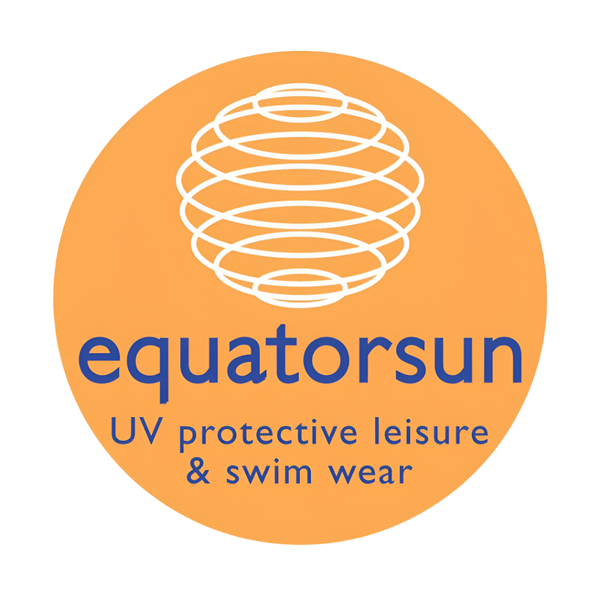Why Sun Protection is Important – Especially for Children
Learn how sun protection can shield you and your children from the harmful, potentially life-threatening effects of sun damage.
Read Time: 7 minutes

Sun protection from a younge age is the best way to prevent skin cancer.
Sun protection isn’t just about avoiding a bit of sunburn. Its about taking preventative action to avoid the life changing effects of cumulative exposure to the sun, and for children, this is even more important - especially babies. For children, it’s about protecting their delicate skin and setting up healthy habits that can last a lifetime, to save a lifetime.
The Science Behind Sun Exposure
What is Ultraviolet (UV) Radiation?
UV radiation is a type of energy that comes from the sun. It’s invisible, but its effects are very real. There are two types that reach us:
• UVA Rays: These penetrate deep into the skin, causing ageing and boosting the harmful effects of UVB.
• UVB Rays: These are the primary culprits behind sunburns and a significant risk factor for skin cancer.
Immediate and Long-Term Effects of UV Exposure
While a sunny day might feel delightful, too much UV exposure can cause harm. Immediately, it can lead to painful sunburn. Long-term effects include premature skin ageing, an increased risk of skin cancer, and even damage to the eyes.
The Consequences of Unprotected Sun Exposure
Skin Cancer – The Most Common Cancer
Did you know that skin cancer is the most common cancer in the world? It’s more frequent than breast, prostate, lung, and colon cancer combined. To put this in perspective, 1 in 4 men and 1 in 5 women will develop skin cancer in their lives. Many cases are preventable by limiting UV exposure.
The Danger of Sunburn
Just one blistering sunburn before the age of 20 can double the risk of melanoma, the most deadly form of skin cancer. And more than five sunburns over a lifetime? That risk doubles again. The research shows that the more you burn, the greater your chances of developing skin cancer gets.
Premature Aging of the Skin
UV rays cause the skin to lose elasticity, leading to wrinkles, fine lines, and sagging. Upto 80% of visible signs of ageing could be attributable to UV exposure. So while these might seem like issues for later in life, early exposure to UV accelerates the process.
Eye Damage
The sun doesn’t just harm your skin. Chronic exposure to UV rays can damage the eyes, leading to conditions like cataracts or even blindness. Protecting your child’s eyes with sunglasses that block 100% of UV rays is crucial - look for UV400 rated glasses.
Why Children Are More Vulnerable to Sun Damage
Delicate Skin, Greater Absorption
Children’s skin is thinner and more sensitive than adults’, making it more vulnerable to UV damage. Their skin has less melanin, which provides protection against UV rays, and is still developing, so it doesn't heal as effectively.
The Cumulative Effect of Early Exposure
Each sunburn causes DNA damage, and each bit of DNA damage is permanent. The DNA damage caused by UV exposure accumulates over time. Sunburns and tanning during childhood significantly increase the likelihood of skin problems later in life, including cancer - read here for tips on preventing the most deadly form of skin cancer.
Behavioral Risks
Children typically spend more time outdoors than adults, whether they're playing at the park, swimming, or enjoying a family picnic. This increased exposure to UV rays adds up quickly, making sun protection essential. Whether through sun protective clothing or suncream, prioritising sun safety for children is crucial to safeguarding their skin.
Tanning: A Harmful Misconception
Tan Skin is Damaged Skin
A tan might look healthy, but it’s actually a sign of skin damage. The common myth of the so-called “base tan” actually only provides the equivalent of an SPF 3 sun cream, which offers almost no real protection.
Increased Risk of Melanoma
Tanning—whether from the sun or a tanning bed—increases the risk of melanoma. It’s vital to teach children that no tan is a safe tan.
Beyond the Skin: Systemic Health Effects
Suppressed Immune Function
Excessive sun exposure can suppress the immune system, making it harder for the body to fight off infections and illnesses.
Heat-Related Illnesses
Children are more susceptible to heat-related illnesses like heat exhaustion or heatstroke, especially when spending long hours in the sun without proper protection.
Conclusion
Protecting yourself and your children from the sun isn’t just about preventing a little redness; it’s about safeguarding future health. Get equipped with protective clothing, use sun cream regularly, and teach them the importance of seeking shade. These simple actions can make all the difference.
FAQs
Children’s skin is more sensitive and absorbs UV radiation more easily than adults’ skin. Early exposure also accumulates over time, increasing the risk of skin cancer and other health issues.
Reapply every two hours, or immediately after swimming or sweating, regardless of the SPF level.
Equatorsun is a trusted brand providing high-quality sun-protective clothing for all ages. Our garments are designed with UPF-rated fabric to block harmful UV rays while keeping you comfortable.
Yes! While Equatorsun’s clothing offers excellent protection, areas not covered by clothing, such as the face and hands, should still be protected with sun cream.
Visit equatorsun.com to explore our range of stylish and effective sun protective clothing for the whole family.
Learn what sun protection you need and when to use it. Choose trusted products like Equatorsun, so that you’re ensuring you and your child stay safe while enjoying the sunshine.
